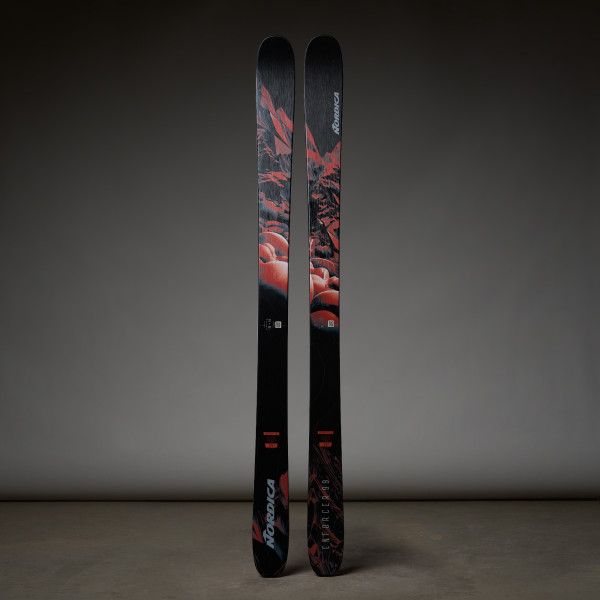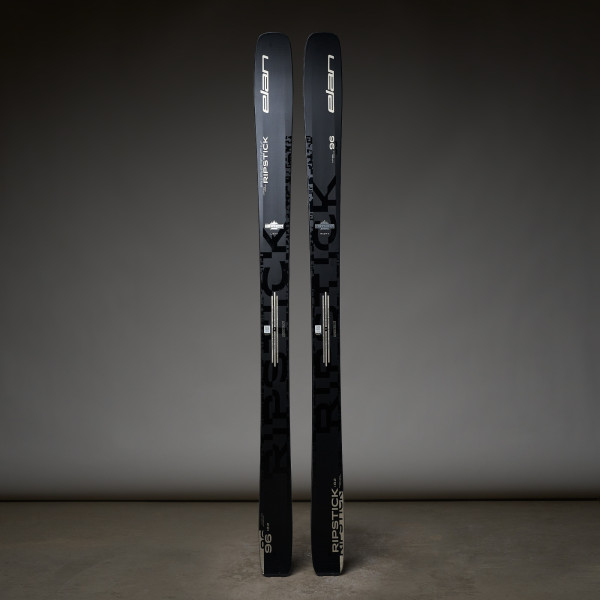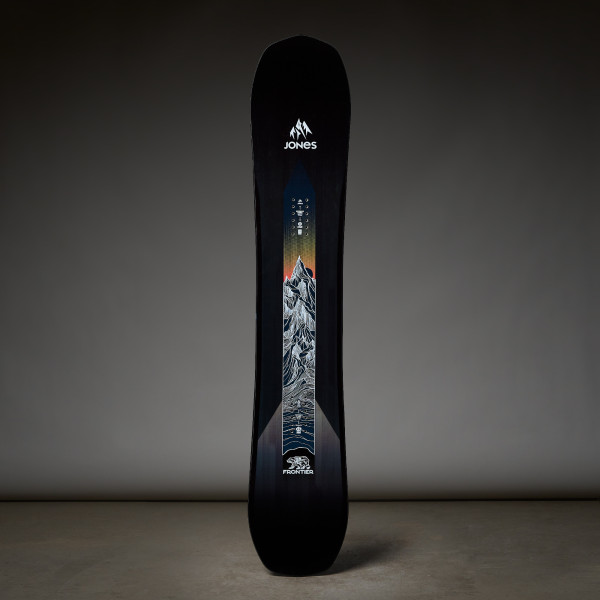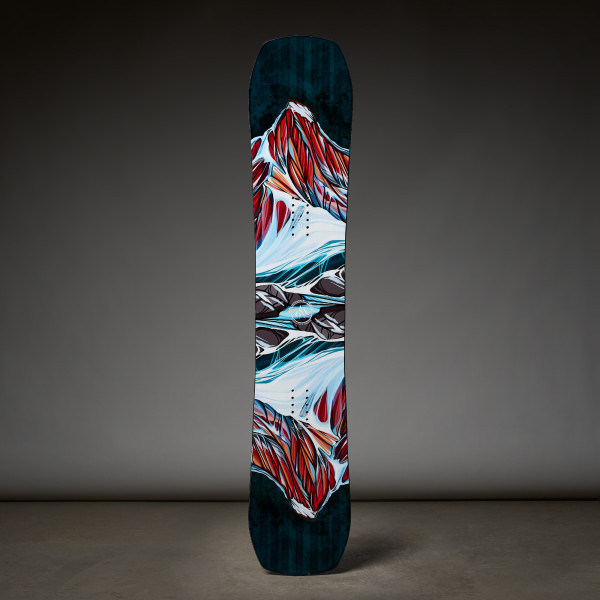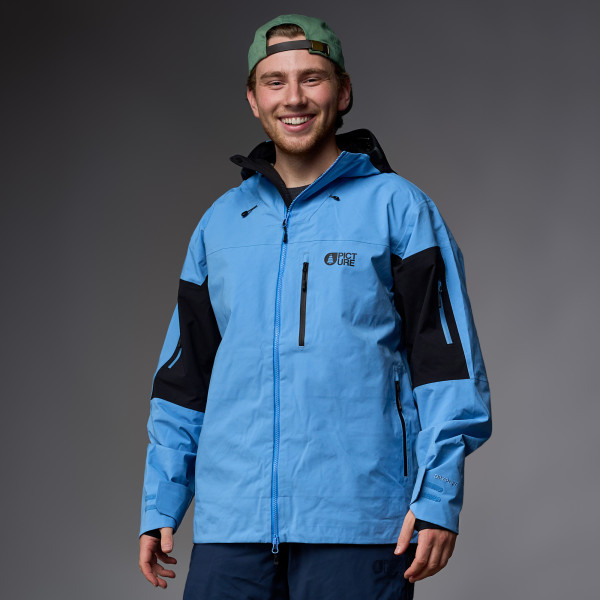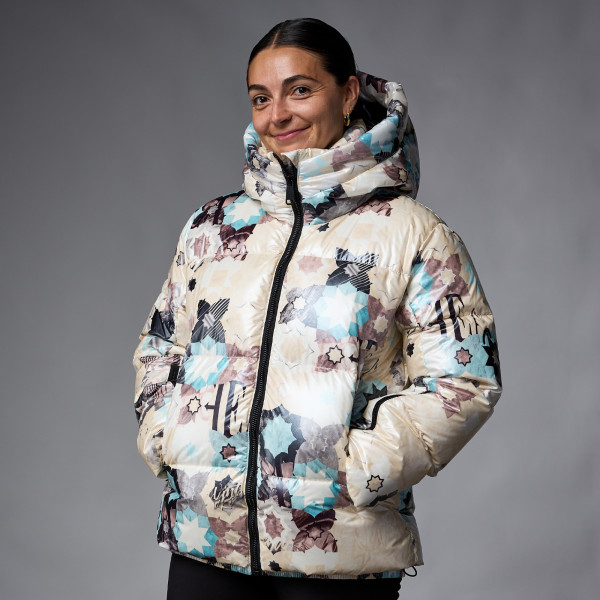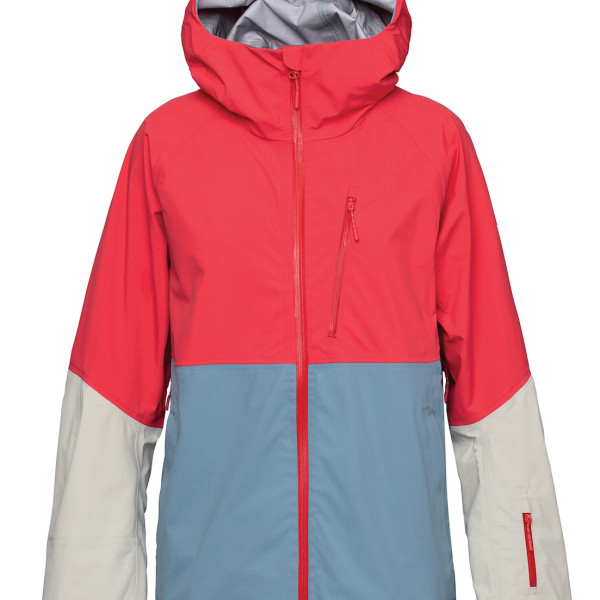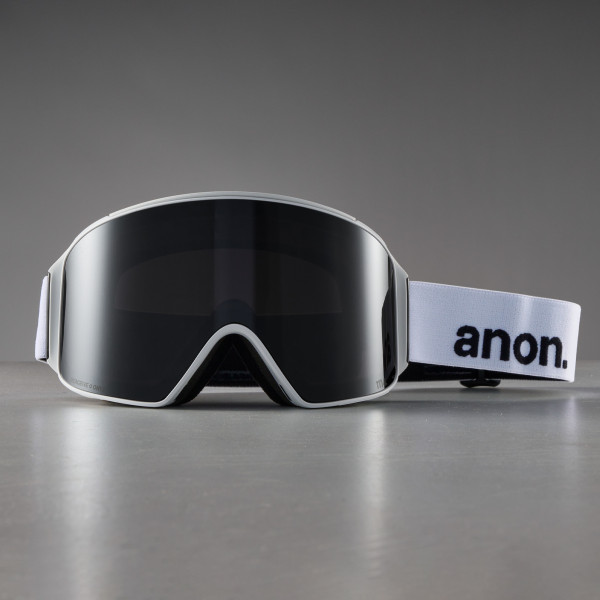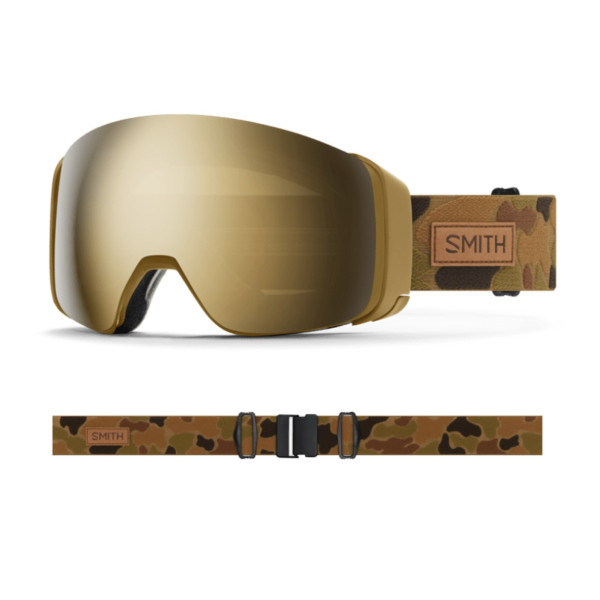Your Shopping Cart
Hot Items
Ski & Snowboard Outlets
Waterproof/Breathable Fabrics + Membranes
Posted November 22, 2017 @ 9:23am | by The Ski Monster
We talk to a lot of folks who will ask us if a jacket or pair of pants is waterproof, and the answer usually falls more into a large grey area than it does a pure “yes” or “no.” Truth is, there are a lot of different things that go into the waterproofing of fabric, and it doesn’t help that there’s a lot of misinformation out there when it comes to waterproof materials to begin with. Often times when you hear “waterproof” it doesn’t actually mean waterproof in practice, which can be really confusing. We’re here to clear up some of these misconceptions and explain the wide range of waterproof fabrics and membranes out there right now.
For example, Gore-Tex, which a lot of people know as the go-to waterproof material, is really great at blocking water, for example. However, Gore-Tex products require a certain amount of internal pressure to start releasing water. What that means in practice is that your body needs to start actually releasing water vapor before the jacket will breathe. Other waterpoof membranes like eVent or Dry.Q by Mountain Hardware will start to breathe immediately when you put them on, regardless of if you are sweating or not. As a result, Gore-Tex products will feel warmer, but won’t breathe quite as well as some of eVent or Mountain Hardwear’s products.
Fabrics vs. Membranes vs. Laminates
The first issue with how we talk about waterproof materials is terminology. Lots of times, fabric and membrane are used interchangeably – when they’re two different things.
- Fabric – A fabric is the outer-most material in jackets or pants. This is the part that you can touch with your hands, and will often times be made of polyamide or a similar fabric. It might be treated with Durable Water Repellent (DWR), but this outer fabric is NOT waterproof on it’s own.
Lots of times, when people say “fabric,” what they actually mean is “membrane.”
- Membrane – The membrane is an additional layer found bonded to the exterior face fabric. This is the part of the jacket that makes it waterproof, and will block water from going through any further. Gore-Tex, Polartec Neoshell, and others are all examples of waterproof membranes.
- Laminate – Here’s where these words kind of get tricky, because there’s no standardized lingo and people just start making up their own words. Gore-Tex will refer to their product as a laminate. All that means is that it’s a fabric bonded to a membrane. So when you’re wearing a Gore-Tex Jacket, the whole thing is a Gore-Tex laminate. Because it combines a face fabric with a Gore-Tex membrane.
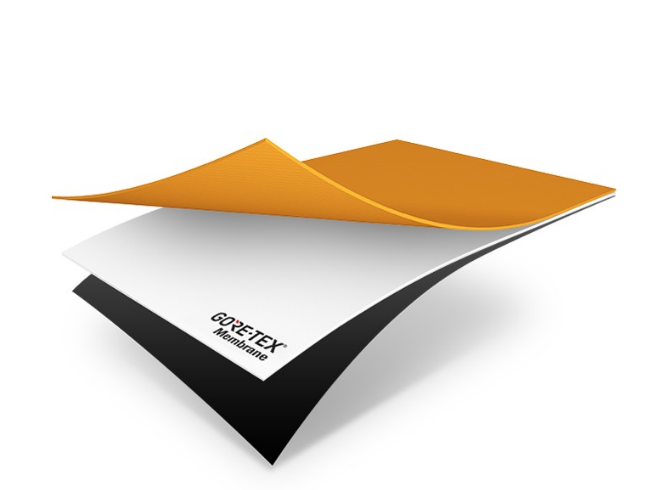
Despite what we or anyone else may say, no waterproof breathable outerwear is going to be completely waterproof, but instead offers various levels of water resistance. Everything will eventually leak water through if given enough time, but top-of-the-line waterproof membranes are so rigorously tested and resistant that they are essentially waterproof for our use. All waterproof technology must strike the balance between being highly waterproof – keeping water out - and still being breathable. (Remember those yellow rubber rain jackets, yea those aren’t breathable, but very waterproof)
If you’ve ever gotten caught wearing a lousy rain coat on a muggy summer day and found yourself pretty sweaty afterwards, you have a pretty good understanding of why breathability is important. When a garment “breathes,” it’s actually letting the water vapor generated by your body to escape through the fabric, instead of becoming trapped between you and your clothes, which will cause you to overheat. While most people might not think of overheating as their biggest concern while on the snow, the truth is that we exert a lot of energy while on the snow and if you’re not wearing something breathable, you can begin to get that clammy and overheated feeling pretty quickly – even on colder days. For people who like to venture deep into the backcountry, or head uphill as much as they like to head downhill, breathability is even more paramount.
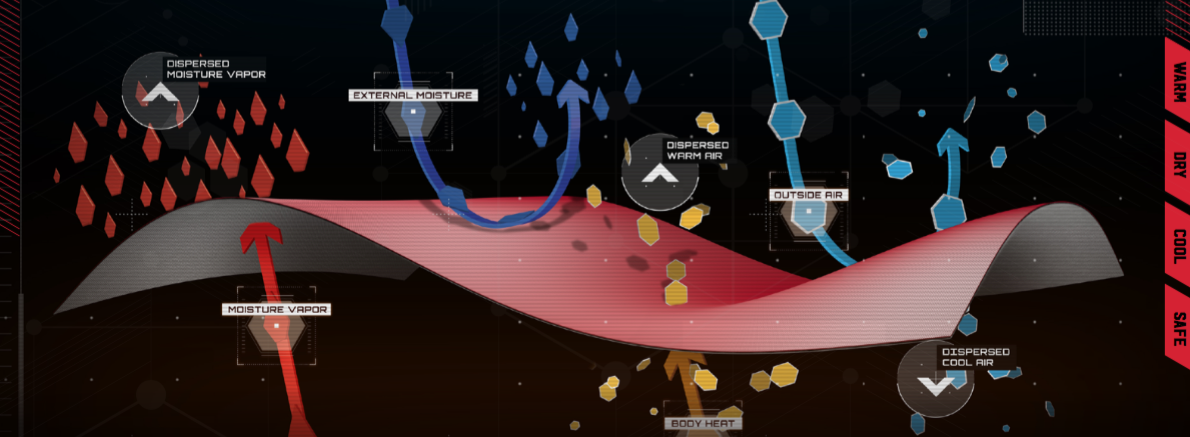
So you know that you need a waterproof/breathable shell, but how can you tell if one shell is more waterproof or breathable than another?
Luckily, there is a rating system to which garments are tested that can measure how waterproof and breathable it is. The most common way that manufacturers do this is by placing a 1 square inch piece of the jacket underneath a column of water in a tube, and seeing how high the water column can reach before it starts to leak through the membrane. This number is measured in millimeters (mm), and the higher the number, the more waterproof the membrane is. These numbers can range from zero up to as high as 30,000mm (30K), which is considered to be top-level waterproofing.
- 0 – 5,000 (5K): These products will still often be marketed as “water-resistant” or “waterproof,” but garments offering this level of protection really won’t keep out water except in very light precipitation.
- 10,000 (10K) – 15,000 (15K): This is typically the threshold for a jacket or pant to be labeled as waterproof, and will keep you dry in most conditions. For casual skiers who stay in-bounds, this will get the job done most of the time.
- 20,000 (20K) – 30,000 (30K): Elite waterproofing and performance. Will hold up in most even the most extreme conditions. For serious backcountry adventurers, this is what you’re going to need.
Disclaimer: These tests are not standardized across brands, and are generally conducted under ideal conditions in a lab, and not in the field. So while the waterproof ratings can be helpful, they shouldn’t be considered the be-all and end-all.
For breathability, a similar process is used, in which manufacturers measure how many grams of water vapor can pass through the fabric in a 24 hour time period. Like with waterproofing, a higher rating means that it is more breathable.
2 Layer vs. 3 Layer
Great, high-performance jackets are like ogres, they have layers (Shrek Joke). When a waterproof membrane like Gore-Tex is laminated to the face fabric of the jacket, that’s known as 2-Layer Construction. On the other hand, 3-Layer Construction is when the Gore-Tex membrane is laminated to the face fabric, and then also bonded to an inner liner, sandwiching the waterproof membrane between two high-performance layers. The inner lining is designed to keep your skin off of the membrane. If the membrane is left in contact with your skin, your natural body oils will eventually clog the microscopic pores, making the jacket less breathable.
3-Layer shell jackets are typically crunchier or stiffer feeling and will offer more durability, they are are found in the highest performance shells. If you’re in a store trying on jackets, you’ll notice that 2-Layer jackets will be softer and more comfortable, and won’t have that same stiff or “crunchy” feeling that three-layer shells have.
Some products will be listed as 2.5-Layer, which just means that the outer two layers are bonded onto a partially protective inner layer. As you could probably guess, 2.5-Layer products perform somewhere in the middle of 2 and 3-Layer ones.
One thing that’s important to remember however is that nearly all insulated jackets are going to be 2-Layer construction. That’s simply because with the added layer of insulation between the membrane and your skin, you just don’t need the added backer to bond the membrane to. So if you’re looking for a Gore-Tex insulated jacket, don’t worry too much if you can’t find any 3-Layer options, insulated jackets and pants are just always going to be 2-Layer based on the way they’re constructed. There are still some shell jackets that are 2-Layers, though too.
Membranes
Even people who aren’t techy geeks like us have still probably heard of, or come across Gore-Tex at some point in the last couple years. While Gore-Tex is often used synonymously with waterproof fabrics, Gore-Tex is its own product that can be found as a membrane in a number of different brands’ garments. All Gore-Tex products go through high-level performance tests, so you know that with the Gore-Tex seal/tag comes a quality guarantee.
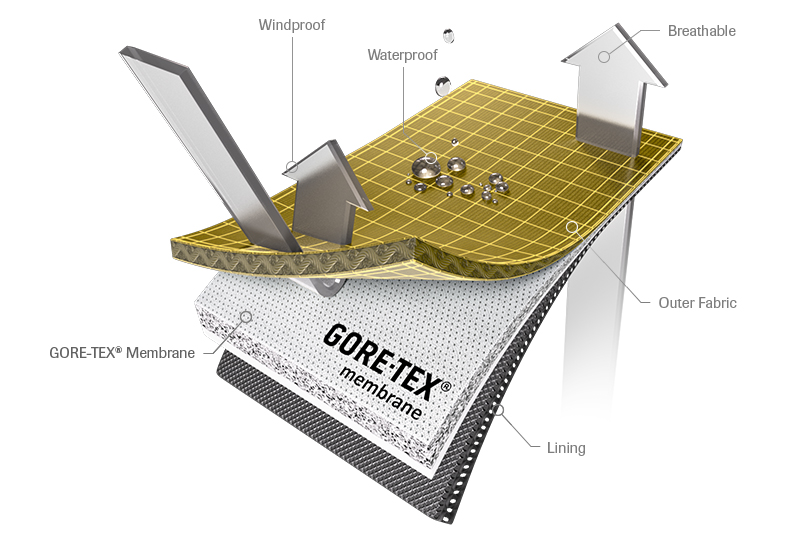
Gore-Tex Pro – The crème de la crème of waterproof face fabrics, Gore-Tex Pro uses a 3-Layer construction: an outer face fabric, a Gore-Tex membrane, and then a micro-grid backer. These products will be waterproof in even the most extreme and rugged conditions, and have passed every one of Gore-Tex’s rigorous performance tests. Extremely waterproof and breathable, products with the “Pro” label will also be more durable than their counterparts – providing top-level protection in extreme conditions for years.
Gore-Tex Active – Geared specifically for high intensity activities. Gore-Tex Active is great for backcountry skiing and touring. It’s designed to be the most breathable laminate in their line, and will feature a lighter membrane to give you the ultimate lightweight and breathable garment. Won’t be quite as waterproof or durable as Gore-Tex Pro, but will breathe better.
Gore-Tex – Not quite as durable as Gore-Tex Pro or as breathable as Gore-Tex Active, but regular Gore-Tex products still go through Gore-Tex’s same performance tests so you still know you’re getting a product that is waterproof and breathable at the highest level.
C-KNIT – Some products may be labeled as C-KNIT, or Gore C-Knit, despite the different name, this is still Gore-Tex, and is almost identical to traditional 3-Layer Gore-Tex, the only difference is the inside liner has been replaced with a newer, softer liner. This will make it breathe better, and just be more comfortable overall. For this reason, C-Knit is found in a lot of lightweight jackets, as well as gloves and mittens.
All Gore-Tex products are waterproof well over 20K.
Not all waterproof membranes are Gore-Tex however, and although Gore-Tex is the most widely known, there are plenty of other high-tech membranes found in ski jackets and pants. While Gore-Tex is awesome, it can have a tendency to not breathe as well as some others. As a result, it might feel warmer, but on a spring day you might want something that’s more breathable so you’re not clamming up. Lots of other membranes get the job done comparable to, or in some cases better than Gore-Tex, but without the heavy price tag.
Polartec Neoshell – Another great one for highly aerobic activities, Polartec Neoshell won’t block water as well as Gore-Tex, but Neoshell was groundbreaking for how breathable it actually is. Neoshell reduces the amount of moisture you need to release for the jacket to start to breathe, so it will breathe better than Gore-Tex products. Not only super-breathable, but also lightweight, Neoshell breathes well, stretches well, and is comfortable to wear. Perfect for adventurers who don’t mind something with a little less waterproofing than Gore-Tex but still want something super-breathable.
Polartec also has a product called Polartec Power Shield which is designed to offer waterproof capabilities to soft shell fabrics. Soft shells have their own pros and cond vs. hard shells, but even with Power Shield, will only be water-resistant between 3K and 5K.
eVent – While most membranes are constructed from similar materials, eVent’s process is different which is really beneficial. Their product has billions of microscopic pores built in for ventilation, so the fabric doesn’t need to be wet to release water vapor. Gore-Tex, for example, won’t begin to release water vapor until a you’re body produces a certain amount –while eVent begins to breathe immediately. As a result, the fabric can be more breathable in a variety of weather conditions. eVent has three different models of their waterproof membranes:
- DV Expedition: 30k Waterproof / 10k Breathable
- DV Alpine: 20k Waterproof / 20k Breathable
- DV Storm: 10k Waterproof / 30k Breathable
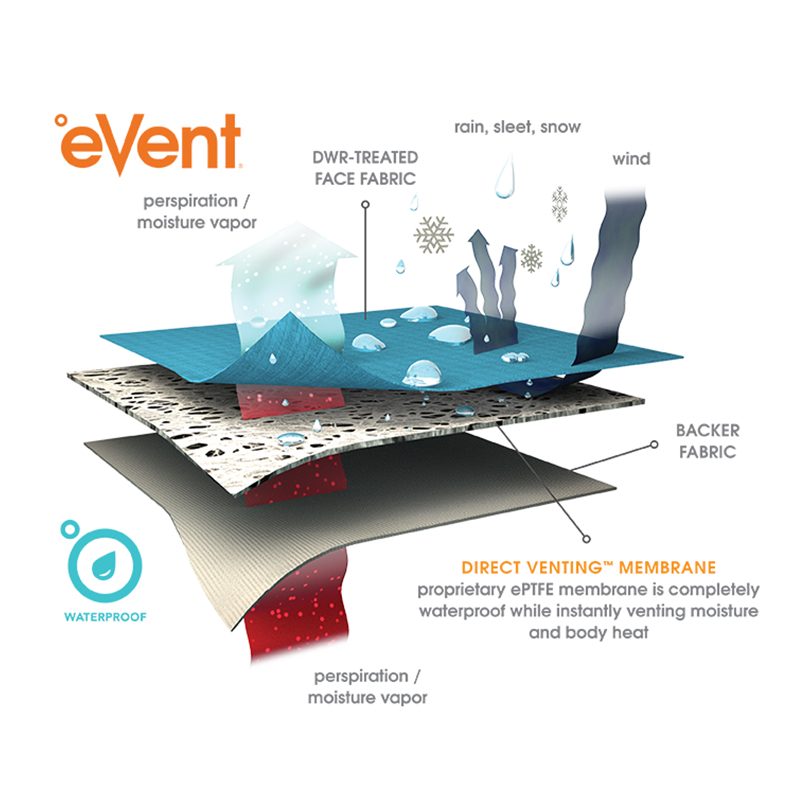
DryVent – A waterproof membrane found in some products from The North Face, it will repel water well and is finished with a repellant that will help water droplets bead and slide off the face of the fabric. Not super-waterproof like some higher end membranes, but will absolutely get the job done for resort skiers who typically stay on trail and in moderate conditions.
H2No – Rigorously tested by Patagonia, H2No is their take on waterproof membranes and is found in Patagonia’s most popular products. Part of their testing is called the “Killer Wash,” where they simulate years of storms in the lab to test the product’s durability.
Dry.Q – A proprietary design of Mountain Hardwear. Like eVent, Dry.Q begins to breathe as soon as you put it on, as oppose to other fabrics that won’t start to breathe until your body temperature has already started to rise. Dry.Q comes in three different models as well:
- Dry.Q Elite: The premium model from Dry.Q, ultra-waterproof and breathable.
- Dry.Q Active: Less waterproof, but more breathable. Similar to Gore-Tex Active, but with more stretch.
- Dry.Q Core: Not going to be as waterproof or breathable, but still featuring the same tech as the other models at a lower price point.
DryTech – While top-of-the-line Mammut gear generally is made with Gore-Tex, some Mammut jackets use their in-house fabric DryTech, which is waterproof / breathable at 10K/10K.
There’s a lot of different waterproof membranes across various brands, and with a large collection of waterproof/breathable shells, insulators, mid-layers and everything in between, it’s important to us that folks understand the subtle differences between them all and don’t fall for any of the misconceptions out there so you can get all geared up in the stuff that’s right for you.
As always, hit us up with any questions and any one of our tech geeks will help you out over the phone, number up top; or over LiveChat (bottom right corner, 11 – 6pm EST).

